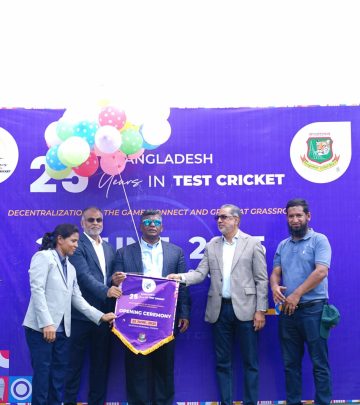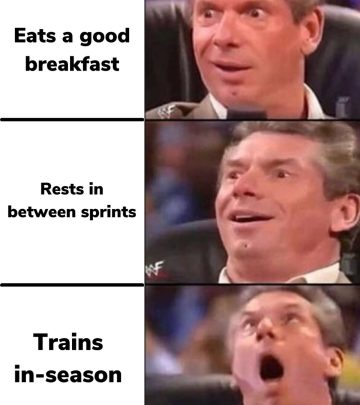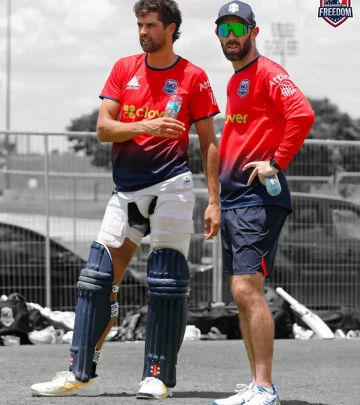Auto-Regulated Fast Bowling: Why AREG Matters
Fast bowling training redefined: science-driven load management and peak recovery at max!!

Image: Instagram
PaceLab Limited is set to revolutionize fast bowling training with its innovative AREG system—a tailored approach that abandons one-size-fits-all training volumes in favor of personalized, science-driven workload management. By factoring in each bowler’s fatigue tolerance, joint load, and recovery capacity, AREG (Auto-Regulated Exercise & Recovery) transforms conventional cricket training into dynamic, individualized sessions designed to maximize performance while mitigating the risk of injury.
Areg: Revolutionizing Fast Bowling Workload Management
At its core, the AREG system is built on real-time feedback and evidence-based metrics that adjust bowling volumes, intensities, and drop-off thresholds based on an athlete’s current condition. Unlike generic training charts, PaceLab’s methodology recognizes that no two bowlers have the same recovery profile or capacity for fatigue. The system is engineered to ensure three key outcomes: first, it enables bowlers to tolerate a greater number of sessions at the same fatigue level; second, it increases their ability to handle higher levels of fatigue within a session; and finally, it enhances their adaptability so they can perform under both high-frequency and high-fatigue conditions simultaneously.
Steffan Jones, a prominent figure in fast bowling training and a respected coach known for his extensive work with PaceLab, emphasizes the importance of this system. His experience, garnered over years of analyzing various training modalities, underlines that smart training is all about customization and individual responsiveness. In his discussions, Jones has often highlighted that effective fast bowling is not achieved through repetition of static drills. Instead, it is attained by monitoring performance metrics, adjusting efforts as needed, and ensuring the training context mirrors match conditions as closely as possible. This approach, which Jones champions, makes AREG not just a tool but a philosophy that places the athlete’s needs at the forefront of every session.
Key Features And Outcomes Of Areg System
Central to AREG is the integration of auto-regulation in both exercise and recovery. This system employs real-time data from drop-off metrics—such as ball speed reductions, jump heights, and changes in med ball throws—to determine the appropriate intensity and volume for every session. By doing so, coaches can balance the variables of volume, intensity, and density, ensuring that the quality of training is never compromised. The new AREG app, soon to be released, automates these calculations, relieving coaches from guesswork and empowering bowlers to train with a precision that was previously unattainable.
In addition to the immediate benefits of tailored workload management, the AREG system embodies a structured approach to training progressions. The methodology incorporates phased training cycles, alternating between accumulation (planned overreaching) and intensification phases. During the accumulation phase, high ball volumes combined with strength and skill development lay the groundwork for improvement. Then, in the intensification phase, the focus shifts to delivering top-speed bowling with lower volumes but heightened intensity. This planned overreaching is strategically balanced with recovery weeks to ensure that athletes not only build capacity but also avoid the pitfalls of burnout or injury.
Another striking aspect of this approach is its contrast to traditional methods that rely on uniform rep counts. In discussions captured on Instagram by Steffan Jones and other experts, the narrative is clear: relying on generic training plans and uncontextualized drills does not translate to peak match-day performance. Instead, smart training must be inherently adaptable. Some bowlers display a knee-dominant style where power is generated by a rapid arrow-pull movement, while others benefit from a hip-dominant technique that functions much like releasing a loaded crossbow. AREG accommodates these differences, ensuring that every bowler’s unique biomechanics are not only acknowledged but fully optimized.
Moreover, the scientific underpinning of AREG brings to light a broader shift in training philosophies across cricket. As the game’s demands become more sophisticated, coaches are increasingly turning to data-driven methods to prepare athletes. The auto-regulated method ensures that every session is executed with the right balance of workload and recovery, which in turn delays the onset of fatigue-induced performance drop-offs. This is particularly important in fast bowling, where maintaining pace and accuracy over extended sessions can be the difference between a match-winning performance and a missed opportunity.
The promise of the AREG system is clear: by blending cutting-edge technology with a deep understanding of individual athlete needs, it offers a more sustainable and effective path to developing fast bowling prowess. As the new AREG app readies for its launch, both coaches and bowlers are eager to embrace this tool that epitomizes the marriage of science and sport. The move towards a fully auto-regulated training regimen reflects a broader vision—to build fast bowlers who are not only technically proficient but also resilient under match conditions.
While the system continues to evolve, the underlying message remains steadfast: trust in the science. The journey towards peak athletic performance is no longer a guessing game. With real-time adjustments and personalized load management, the future of fast bowling training is brighter, safer, and more effective than ever before.
Read full bio of Srijita De
























